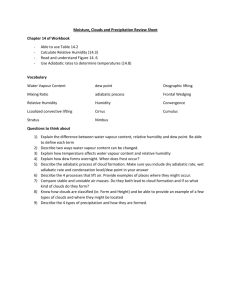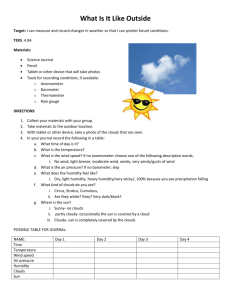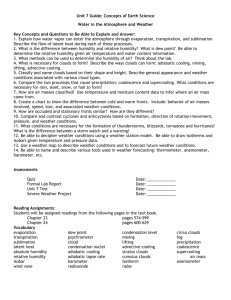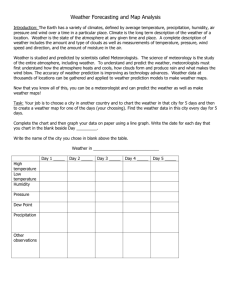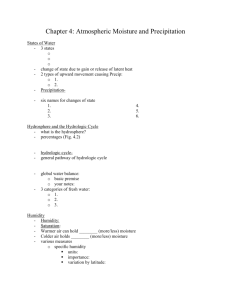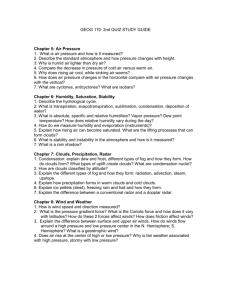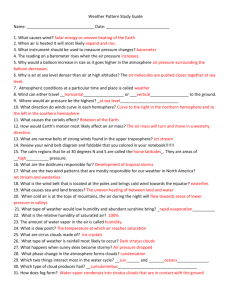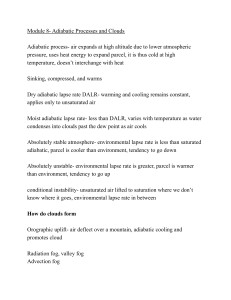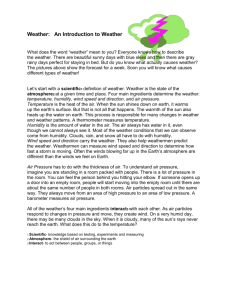Weather and Climate: Exam Two Review Sheet
advertisement
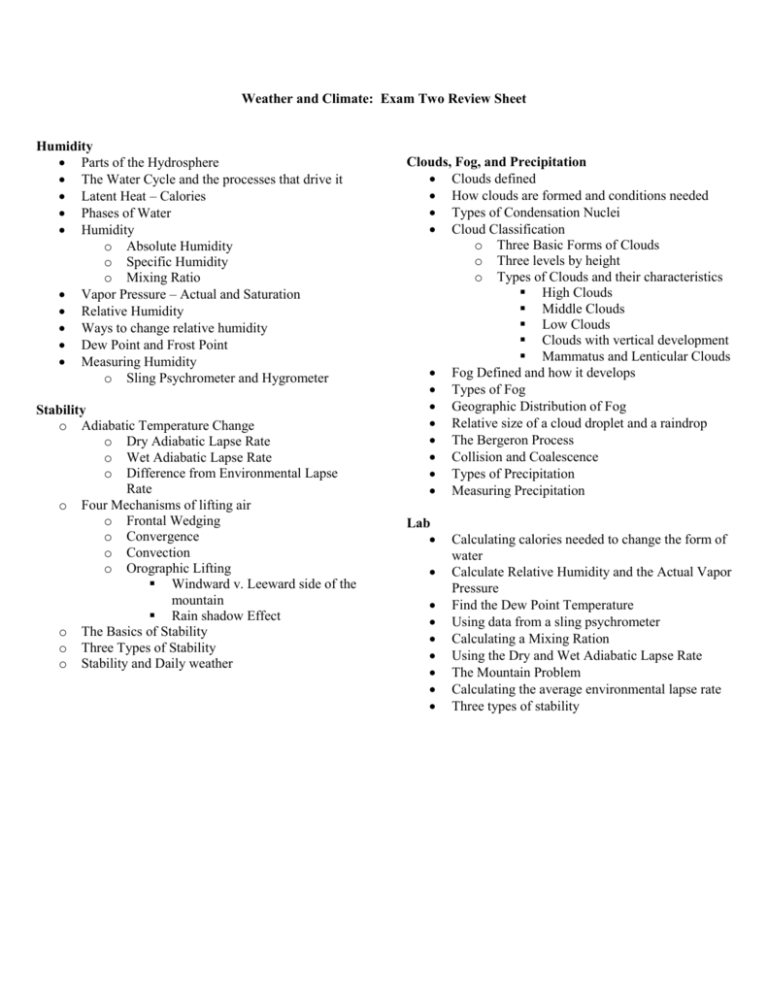
Weather and Climate: Exam Two Review Sheet Humidity Parts of the Hydrosphere The Water Cycle and the processes that drive it Latent Heat – Calories Phases of Water Humidity o Absolute Humidity o Specific Humidity o Mixing Ratio Vapor Pressure – Actual and Saturation Relative Humidity Ways to change relative humidity Dew Point and Frost Point Measuring Humidity o Sling Psychrometer and Hygrometer Stability o Adiabatic Temperature Change o Dry Adiabatic Lapse Rate o Wet Adiabatic Lapse Rate o Difference from Environmental Lapse Rate o Four Mechanisms of lifting air o Frontal Wedging o Convergence o Convection o Orographic Lifting Windward v. Leeward side of the mountain Rain shadow Effect o The Basics of Stability o Three Types of Stability o Stability and Daily weather Clouds, Fog, and Precipitation Clouds defined How clouds are formed and conditions needed Types of Condensation Nuclei Cloud Classification o Three Basic Forms of Clouds o Three levels by height o Types of Clouds and their characteristics High Clouds Middle Clouds Low Clouds Clouds with vertical development Mammatus and Lenticular Clouds Fog Defined and how it develops Types of Fog Geographic Distribution of Fog Relative size of a cloud droplet and a raindrop The Bergeron Process Collision and Coalescence Types of Precipitation Measuring Precipitation Lab Calculating calories needed to change the form of water Calculate Relative Humidity and the Actual Vapor Pressure Find the Dew Point Temperature Using data from a sling psychrometer Calculating a Mixing Ration Using the Dry and Wet Adiabatic Lapse Rate The Mountain Problem Calculating the average environmental lapse rate Three types of stability
